
by Valeria Cammareri | Jul 24, 2016 | Stories, Valeria C, You Are Grryo

Nei Cruz is not only a talented photographer: when talking of Nei it is impossible to leave out his generosity in supporting the community of Instagram photographers. Nei is a rare case, quite possibly unique on the web, where his generous qualities are probably more known than his photographic skills.
We have asked him to talk a bit of himself with us.
Tell us a little bit about yourself…
I’m not good at talking about myself, so here’s a profile written about me by my friend Ruth Efrati Epstein for Shootermag:
“Nei Cruz has a passion for style and beauty in both his career and personal life. He brings this style to his mobile photography. Nei was born in Rio de Janeiro, Brazil. He graduated with a degree in Art Direction from the Universidade do Estado do Rio de Janeiro. Desiring to perfect his craft, Nei moved to the United States 30 years ago. He has worked with several world-renowned photographers and his work has been featured and published in a wide range of editorial magazines, including Vogue, Allure, W, WWD, Elle, L’Uomo Vogue, Cosmo Girl, Lucky, Surface and Essence.
It wasn’t until Nei got his first iPhone that he began to experiment with mobile photography. The arrival of Instagram turned his dabbling with iPhone photography into a passion.
He is as committed to the mobile-photography communities as he is to his photography. Nei is an extremely passionate supporter of many photographers. Many lasting relationships among mobile photographers have begun with an introduction from Nei.
In 2014, Nei became the Editor At Large for Shooter Magazine.
Nei resides in Manhattan, New York City, and continues to work in the fashion industry.”
By Ruth Efrati Epstein @80degrees

Did you study photography at college?
No. I studied Art Direction. However, I’ve worked with amazing photographers all my life.
What inspired you to start shooting and when?
I’ve always loved photography, but I always stayed in the background, art directing, until I got my first iPhone.

When did you decide to use just the iPhone for your photography?
Right after I got my very first iPhone. It was when the iPhone came out. To be able to catch a moment and edit the image all in one device was such a genius idea. I specially started taking more pictures when I joined Instagram.
When did you join Instagram and what does the community mean to you?
I joined Instagram during September, 2010.
I used to delete images as I uploaded new ones. It was completely different than what it is today. There was a wonderful sense of community and you could talk and like images with no limits. No blocking. I miss that time, but I understand that all things change, and we must adapt. It’s a business now. Ever since these changes have been implemented, I lose followers with each post I make, no matter how good an image is, or how good the content is of what’s being posted. But I keep coming back, because of the community. I have made so many wonderful friends. They’re so loyal, encouraging and supportive. Some, I’ve even been able to meet in person. It’s all about the people. It’s also my way of escaping reality. The best thing is to see the world, people and things through someone else’s eyes.

Which camera apps do you use to take photos on the iPhone?
I mostly use the native camera and native tools. I keep it simple.
Which apps do you prefer for editing?
I avoid over editing. If I use a filter, it’s mostly VSCO at the lowest percentage.
I also use Snapseed selective adjusting and sometimes FilterStorm. Again, I try to keep it simple.
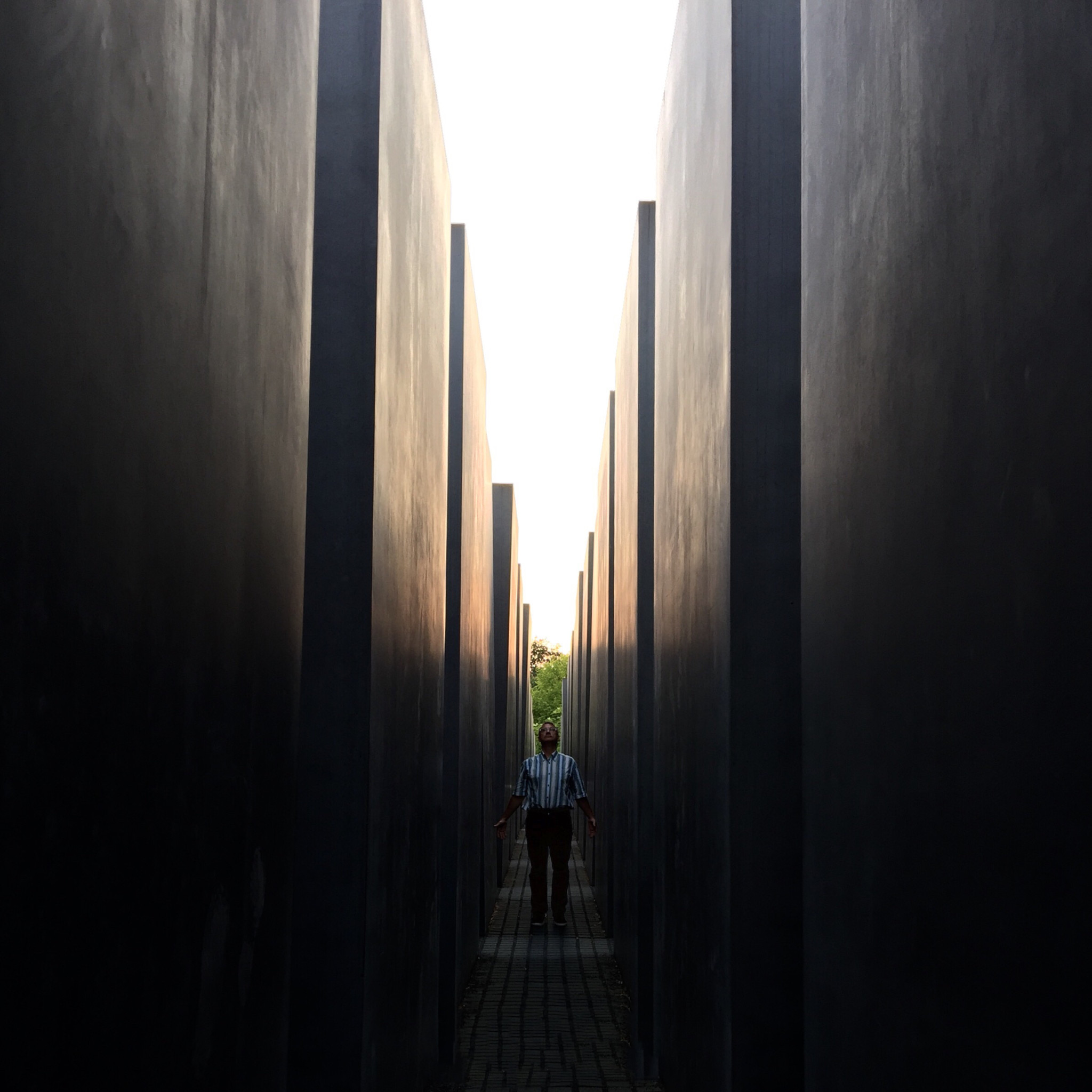
Is editing a long process for you?
Not really. It depends on the image, feel and mood I want to create. Besides, I have ADD (Attention Deficit Disorder), and no patience to spend too much time on an image.
However, I do spend a lot of time on cropping and aligning. If the image will work, I know it right away. And I usually take one single shot per subject.

I was very surprised to read you use only iPhone even when you work. I’m thinking about a few gorgeous images on your Instagram account taken for a fashion editorial. How was the staff and the model’s reaction when you started shooting with a mobile rather than a professional DLSR ?
At first they are surprised and skeptical. But when I show the image after post production, which I do on my own iPhone, they’re happy and impressed.

In more than one occasion you have mentioned both on your Instagram and Facebook account, of your depression: it seems to be an issue you have been fighting for a long time. Nevertheless, there isn’t any sign of melancholy or sadness in your images, and this condition apparently does not affect your photography, as your images are so full of life and in bright colours.. Has photography been of some help in coping with your depression ?
Absolutely! It’s a wonderful way to get my mind out of that dark feeling. A form to “escape.” I think subconsciously, I try to compensate my depression with “happy images”, for lack of a better word. Depression is a serious illness. I’ve learned over the years how to cope with it. I wish there wasn’t such a negative stigma attached to it. Millions of people suffer alone with this illness. That’s a shame. By talking about it, so many people have reached out and shared that they too suffer from it and they feel connected. The reactions are mostly positive, but sometimes heartbreaking.

Scrolling your gallery on Instagram we see an elegant mix of shots of gorgeous models, street photography, and architecture.
Can you tell us more about these three chosen/preferred kind of photographs?
Honestly, I like all genres of photography. Maybe it is because I’m an art director and have worked with so many brilliant photographers, each with their unique style. I have a special place for portraits. It’s a shame that this genre doesn’t get the recognition it deserves. Street photography is really hard for me, but I love the genre. I’m just not good at it, for lack of concentration.
I also love architecture. I tend to prefer clean and well cropped images for that.

What captures your attention when you are around with your iPhone and you are not shooting for work?
Anything. Art in all forms, a moment, a feeling, a person, the environment, movement and even music. Whatever catches my attention.

What and why do you look for when shooting: emotive aspects, reality, or just beauty?
It’s always a mix of all things. A moment, a place, a face, a feeling… I never know what will catch my eye. I “stumble” onto my images. I rarely prepare.
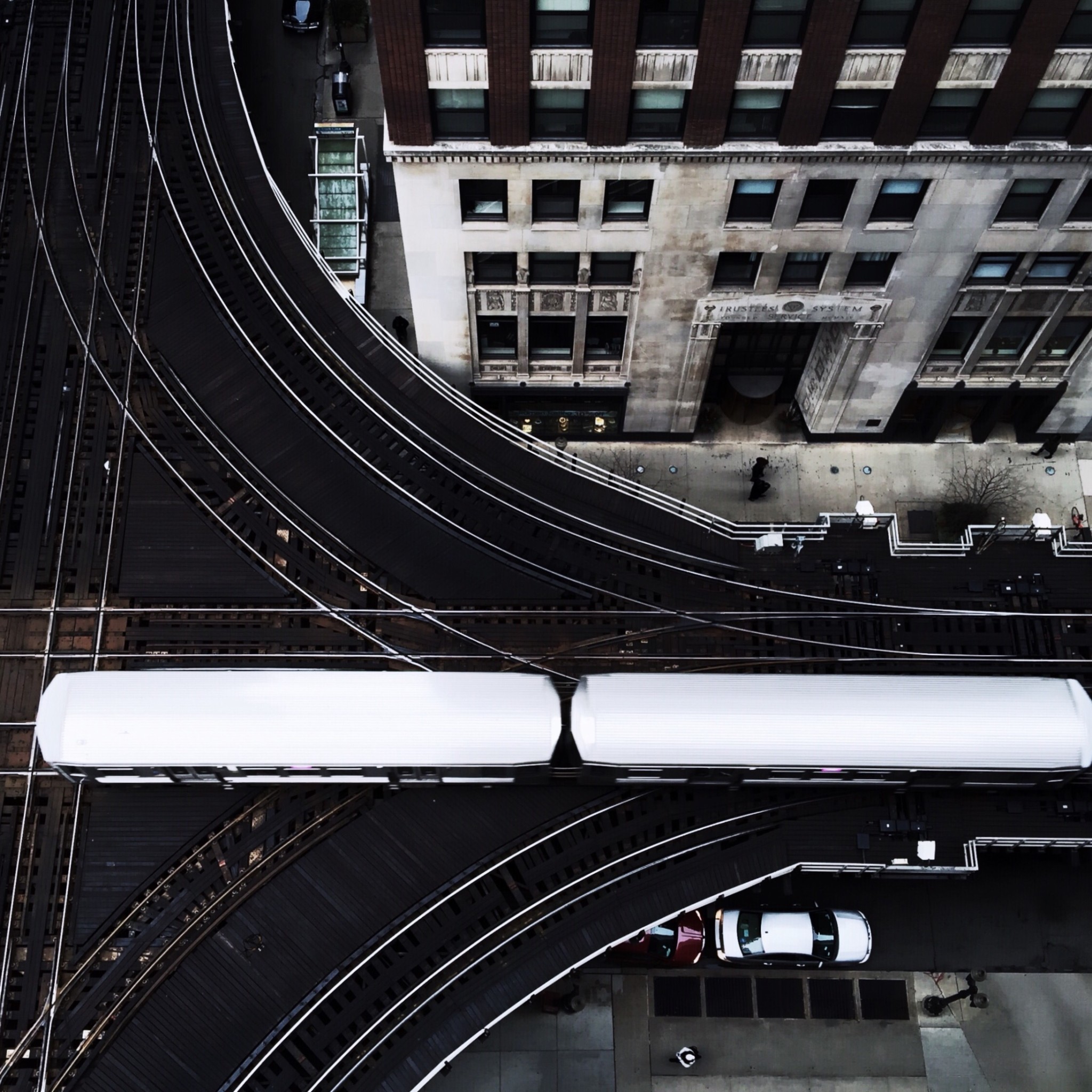
What is beauty, according to you?
Ah! The million dollar question! I don’t think you can define beauty. The cliché says that “beauty is in the eye of the beholder.” It’s true. It’s so personal! There’s beauty everywhere. Even in something others might consider “ugly”, “unattractive”, or mundane. It’s so hard to explain. I’m not good with words. There’s beauty even in tragic moments.
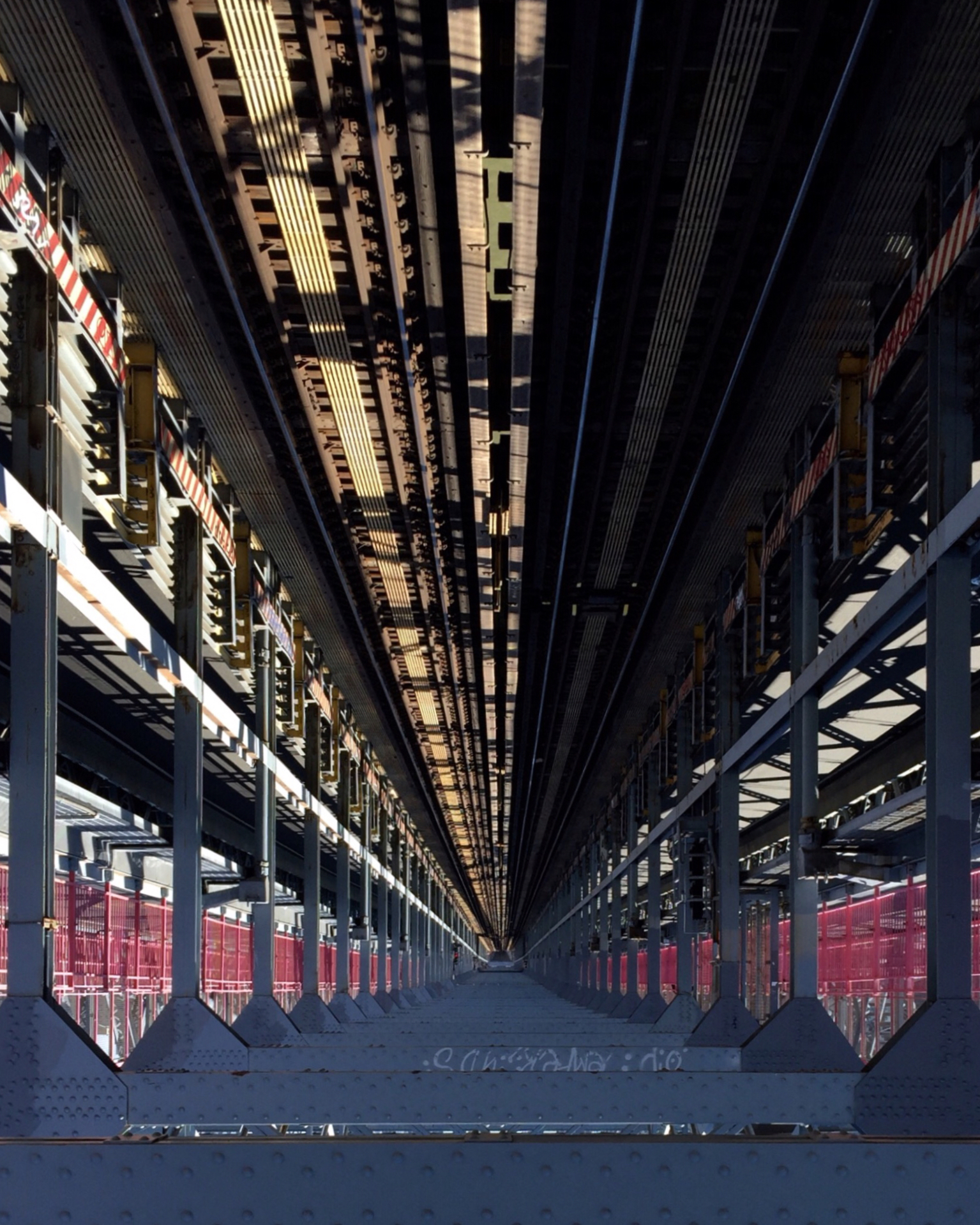
Photography is an opportunity to let us speak of ourselves in a visual way. What do you want to tell us about you with your images?
I have no specific “message.” Sometimes I publish an image I love, and no one gets it. But if I had a message, it would be for people to think, reflect and feel something. Isn’t that what art is for? To provoke thoughts and feelings?

What does photography mean in your life?
Again, this is a complex question to answer. Like any form of art, it’s my way to express myself. Without art and artists, this world would be a sad and lonely place.

Is there one image in your gallery you love most? And if yes, could you tell us why?
There are several. Mostly they evoke a feeling I had at a specific time and they remind me of that specific time. Also there are some images I love because of a certain “aesthetic.” It’s hard to explain. So personal.
Talking of photography, which are according to you, the most common mistakes a beginner makes?
I’d say images that are not aligned, not thought out, or composed. It drives me crazy to see a horizon that’s not perfectly aligned, for example. But that’s really just my thing.

Do you have any suggestions to give about photography?
Have fun and don’t be afraid of experimenting! Shoot what you like and what intrigues you!
Let me know more about your role in Shootermag.
Shootermag is the first photo magazine published in the world dedicated to mobile photography. I manage and select photographers for the features after carefully looking at their body of work. Shootermag USA was the first country-specific edition, published with only photographers from the USA.
Ruth wrote this about me:
“He is as committed to the mobile-photography communities as he is to his photography. Nei is a passionate supporter of so many photographers and he never fails to add a kind, empathic or supportive word. Through his deep commitment to mobile photography and the sense of community he has found, Nei became in 2014 the USA Editor At Large for Shooter Magazine.”
When talking of Nei Cruz, most of us as former AMPt members, or owners of an account on social sites like Instagram and Facebook, think not only about a talented photographer but also of a generous person supporting other peoples’ work. I think your encouragement has been and is for many of us, very important. What or who made you such a warm person, so communicative and outgoing ?
I’m not sure. I didn’t have a happy childhood. I wasn’t encouraged or accepted for who I was. I know how that feels, so maybe that makes me care about what people feel. Everyone deserves love, respect and encouragement. Maybe it’s just my nature and I was born with a caring personality. I don’t know.
Where can we see your work?
Instagram | Facebook | Twenty20 | VSCO

by Grryo Community | Jul 19, 2016 | Stories, You Are Grryo
MOBILE STREET PHOTOGRAPHY
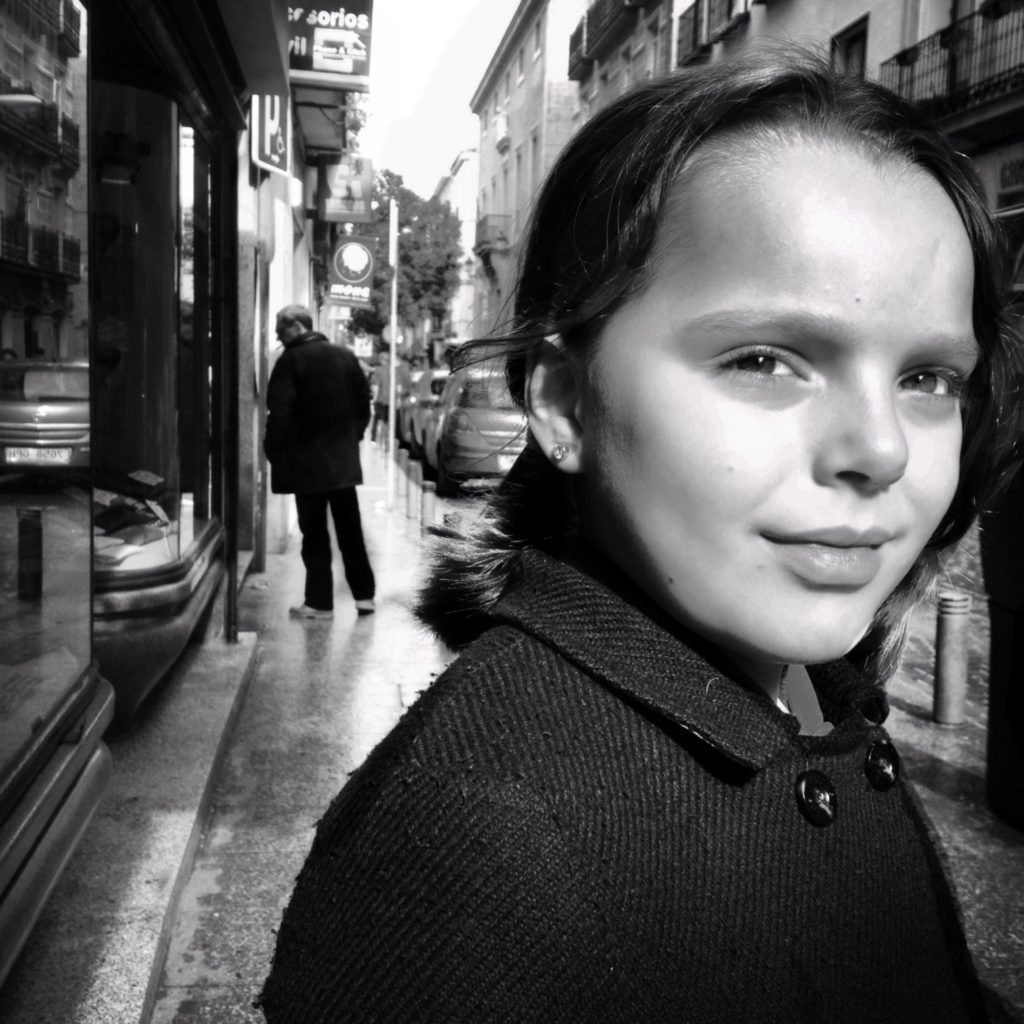 “Martina”
“Martina”
Mobile photography has meant a real revolution in my life, both at a personal and a professional level. Since I started mobile photography almost six years ago, I have watched and enjoyed the world in a different way from before I bought my first iPhone. I’ve always said that, before, I used to wander around the streets like an automaton, looking in front of me but not paying attention to whatever happened around me. However, since I’ve had my iPhone and, above all, since I fell in love with mobile photography, my perception of the world has been totally different.

Backlit smoke

Love is in the air
I´m an architect, not a photographer, but I feel myself as such. Maybe I had the soul of a photographer and I wasn’t aware of it; maybe it is something I have developed, thanks to my phone. I don´t know, but the truth is that I wander now with my eyes wide open, phone in my hand, camera turned on, alert to whatever happens around me, making sure not to miss any scene worth being captured.

Morning leisure

Fixing the world

A tough day
The natural evolution from architecture to photography, starting with capturing deep perspectives of streets, sun lit façades, buildings from an impossible point of view, has turned into an uncontrollable passion for people, capturing peoples’ faces, for gestures, glances, or in a few words, for what is called “street photography”. It has been like adding a zoom lens to the way I look, going from focusing on wide urban spaces, to the people who are part of that scene, to making those people the main characters of my photographs, where now, the city is now the background: the stage where people play out their lives. It has been a switching of roles.

Matching yellow

Reading mates

Despite everything…
I believe it has been a natural evolution, without forcing. It has been the result of an inner meditation that has given birth to more intimate photography; less focused on huge frames, on great light/shadow contrasts, but rather, a focus on the character, on their eyes, on their hands, on their wrinkles. I´m not that interested in the place, as much as I´m interested in the human being. To me, the greatest compliment I may receive when somebody views one of my photographs is when the observer tells me they can imagine the story of the person captured; their life, their circumstances.
My iPhone has played the main role in this evolution. I must confess that what interests me most is “candid” photography; in which the person captured is not aware of being photographed, thus transmitting a naturalness that a portrait doesn´t transmit, in my opinion. And I love to shoot at a close distance; I need to get close to people, in order to capture them properly, but also for a certain excitement I feel when I´m close to the people I capture. And I can only have that sensation with my iPhone. It would be easy to use a big camera, with a good zoom, stay at a certain distance and then shoot. But I´m not interested in that. I believe there´s a certain magic in closeness that I don´t feel when using the zoom. I have already shot with my phone for a certain period of time, and I have already developed an ability for camouflage, pretending to do something else, which helps me to be unnoticed. I think it is more difficult to slip past with a camera, whereas in the end, I am nothing else but a citizen with a phone in my hands, something very common nowadays; which allows me to get close to people without raising suspicion.
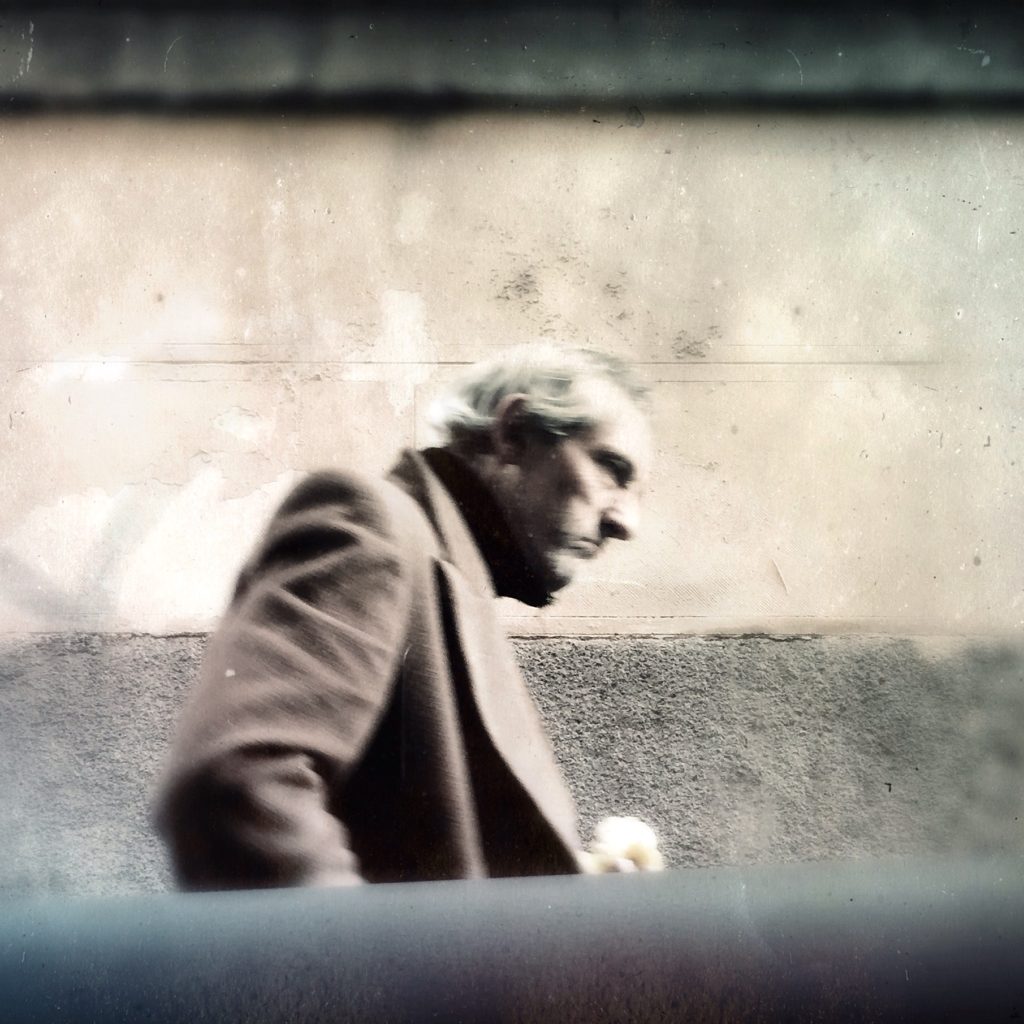
A distressed face

Such a proud woman

A concentrated face
This is why I´m so grateful and happy to have found a new passion thanks to a mobile device. A passion that has to do with life, with people, with making beautiful scenes last forever. A passion that makes me have my eyes wide open every time I go to the street, longing to witness new scenes. A passion that makes me analyze people just by looking at them, that boosts me to photograph them, to share those images, that wakens peoples’ imagination and figure out what the life of the people photographed is like. A passion, in a few words, that makes me feel alive.

My parents

Candela
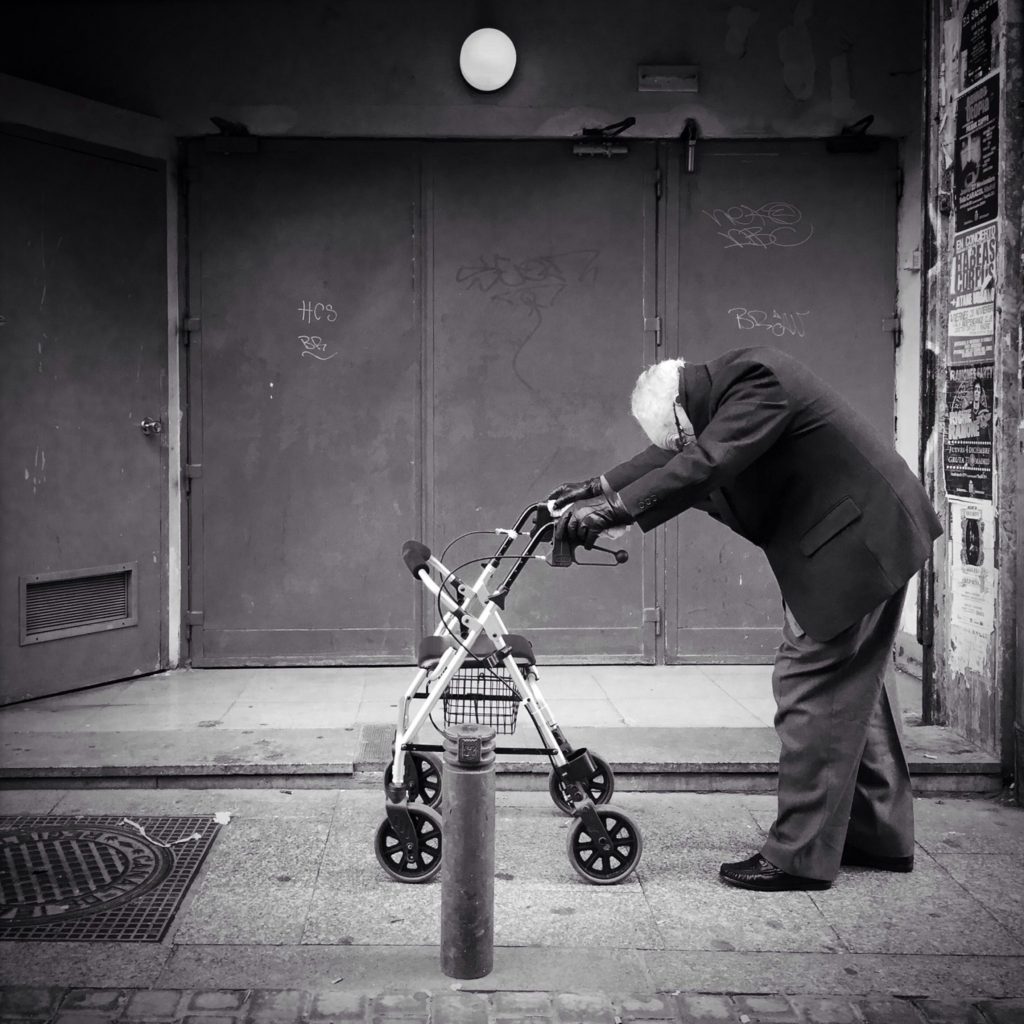
“Courageous, despite age” My humble tribute to my friend Óscar. R.I.P.
Find Luison on :
Blog | Instagram: Luison & Luison_street | EyeEm | Facebook | | Flickr | Twitter | Google+
________________________________________________________________
(Spanish) FOTOGRAFÍA CALLEJERA MÓVIL
La fotografía móvil ha supuesto una auténtica revolución en mi vida, tanto a nivel personal, como profesional. Desde que empecé en esto hace casi seis años, veo y disfruto el mundo de manera diferente a como lo hacía antes de la compra de mi primer IPhone. Siempre comento que antes solía ir por las calles como un autómata, mirando continuamente frente a mí, sin prestar atención a lo que ocurría a mi alrededor. Sin embargo, desde que compré mi IPhone, y sobre todo, desde que me enamoré de la fotografía móvil, mi percepción del mundo es totalmente diferente.
Yo soy arquitecto, no fotógrafo, pero me siento como tal. Quizás tenía alma de fotógrafo y lo desconocía, quizás es una faceta que he desarrollado gracias a mi teléfono móvil. No lo sé, pero lo cierto es que ahora camino con los ojos abiertos, teléfono en mano, cámara encendida, atento a todo lo que ocurre a mi alrededor, dispuesto a que no se me escape ninguna escena digna de ser capturada.
Lo que inicialmente fue un evolución natural de la arquitectura a la fotografía, capturando calles en perspectiva, fachadas en luz, edificios desde ángulos imposibles, se ha convertido en una pasión incontrolable por las personas, por los rostros de la gente, por los gestos, las miradas, en definitiva, por la llamada “fotografía de calle”. Ha sido como hacer “zoom” en mi forma de mirar, pasando de centrarme en grandes espacios urbanos, en el que las personas formaban parte de ese escenario, a hacer que esas personas se conviertan en los protagonistas de mis fotografías, pasando la ciudad a ser el escenario, invirtiendo los papeles.
Y creo que ha sido una evolución natural, sin forzar, fruto de una reflexión interior que ha dado paso a una fotografía quizás más intimista, menos centrada en grandes encuadres, grandes contrastes luz-sombra, sino más bien centrada en el personaje, en sus ojos, sus manos, sus arrugas. No me interesa tanto el lugar como el ser humano. Para mí, el mayor cumplido cuando alguien contempla una fotografía mía es que imagine la historia del personaje fotografiado, su vida, sus circunstancias.
Y en esta evolución ha jugado un papel principal mi IPhone. Debo mencionar que a lo que a mí me interesa de verdad es la llamada fotografía “cándida”, aquella en la que la persona no es consciente que está siendo fotografiada, transmitiendo una naturalidad que el retrato,creo, no tiene. Y a mí me gusta capturar de cerca, necesito acercarme a la gente, tanto para poder fotografiarlas bien, como por una cierta excitación que experimento al estar próximo a la persona que capturo. Y esa sensación sólo puedo tenerla con mi teléfono móvil. Sería fácil usar una cámara fotográfica grande, con un buen zoom, situarme a una cierta distancia y luego disparar. Pero no me interesa. Creo que hay cierta magia en la proximidad que no siento tirando de zoom. Tras ya un cierto tiempo disparando con mi teléfono, he desarrollado ya ciertas técnicas de camuflaje, de disimulo, que me ayudan a pasar desapercibido Creo que una cámara es más difícil que pase desapercibida, mientras que yo, al final, no dejo de ser un ciudadano más con un teléfono en la mano, algo totalmente habitual hoy en día, lo cual me permite aproximarme a la gente sin levantar suspicacia.
Es por todo esto que estoy tan agradecido y feliz de haber encontrado una pasión gracias a un teléfono móvil. Una pasión que tiene que ver con la vida, con la gente, con hacer que escenas bellas sean eternas. Un pasión que hace que cada vez que salgo a la calle, salga con los ojos abiertos, con la ilusión de ser testigo de nuevas escenas. Una pasión que me hace analizar a la gente con solo mirarla, que me impulsa a retratarlos, a compartir esas imágenes, a despertar la imaginación de la gente, a imaginar la vida de aquel que retrato. Una pasión, en definitiva, que hace que me sienta vivo.
Find Luison on :
Blog | Instagram: http://www.instagram.com/luison & http://www.instagram.com/luison_street | EyeEm | Facebook | | Flickr | Twitter | Google+

by Grryo Community | Jul 13, 2016 | Stories, You Are Grryo
Like many Americans, both my mind and news feed have been filled with thoughts and images related to the events that occurred in Dallas this past Thursday. I was moved by photos I saw by
Richard Hill the following day, many which were titled “…before the peace broke”, because for the most part, what I had seen was only video footage of people running in terror. I asked Richard to answer a few questions and share his images here.
Why did you decide to attend the rally in Dallas?
I attended the rally because I think we’re in the middle of a big moment right now. I’m not sure if it is as big as what was going on in the Civil Rights Era but I haven’t seen anything like this in my adult years. Also, I wanted my son to be a part of something that means a great deal. It’s one thing to sit around the dinner table and talk about race and prejudice but it’s quite another to put feet to your words. I thought this was the perfect opportunity to make that happen for both of us.
Tell me a bit about the atmosphere there when you arrived.
When we arrived I noticed very quickly that we were among a heterogeneous mix of America. Everybody was there: black folks and white folks and Asian folks, etc. I felt right at home. We never felt in danger even when the rhetoric got heated. People spoke their minds but no one that I could see felt offended. We all know that something is wrong. It’s hard, especially for white folks like me, to really feel what is happening. I don’t pretend to fathom what my black brothers and sisters are going through and have been going through. I just saw people that were hurting and I wanted to be close them. I would want the same thing if I were in their shoes.
What struck you most about the experience?
I realize that in many ways I’m outsider here. But I’m also a human being and a man and the differences that we may have are certainly eclipsed by what we have in common. Before the rally and march I thought it was optional for me to either be a part of this or stay home. After all, I have been going about my business for all these years and I have been just fine. Or so I thought. After the March was over and the shootings and particularly after I attended a black church the following Sunday, it has been easy to see how wrong I have been.

by Romina Mandrini | Jul 12, 2016 | Romina Mandrini, Stories, You Are Grryo
In Spirit and Truth: An Interview with Laura Valenti by Romina Mandrini
A couple of years ago I enrolled in a six-week online photography course that would impact me – both as a person and as an artist – in ways I never could have imagined. This workshop not only challenged a lot of the pre-conceived ideas I had about photography and art making, but was also the impetus behind a profound journey of self-discovery.
The course was Candela: Finding Inspiration Through Photography, and it was taught by Laura Valenti. Laura is a photographer, curator and educator from Portland, Oregon. She is also the Outreach Director for Photolucida, a non-profit organization that aims to build connections between photographers and the gallery and publishing worlds.
Recently, I had the pleasure of asking Laura a little more about herself, her work and her philosophy.

Image by Fritz Liedtke
As a child you lived in Asia. Tell us a bit about your cultural background and how you grew up.
I spent my first fifteen years in Korea, Japan, and Hong Kong. Because I had such a transient childhood, it took me a long time to develop a sense of place like many other people have. I didn’t have roots in any particular place. My family used to say, “Home is where the furniture is!” It wasn’t uncommon for us to wake up in the middle of the night and not remember what country we were in, or what the house around us looked like. Over time, I learned that I do have a sense of place – I just carry it with me wherever I go. This concept has made its way into my photographic work, actually. I often photograph scenes that express a sense of home, comfort, and belonging.


What attracted you to photography in particular, as opposed to other forms of art making?
I really don’t know what drew me to photography, though I’ve always had a penchant for artsy, crafty endeavours. My father had a darkroom in the basement, so I was lucky to see the magic of the process at an early age. I know I desperately wanted my parents’ camera when I was very small. I keenly remember my mother allowing me to use it one day when I was five years old, and I remember taking my very first picture. I took pictures when we were out and about in Seoul, I photographed friends at birthday parties, and I set up my stuffed animals in silly little tableaus. The camera shot square images and came equipped with exciting flashcubes. Today I still shoot square format, so you could say I’ve stayed true to my original vision.

You have a deep interest in the intersection of mindfulness and the creative practice, and your focus is very much on the process itself rather than the end product. What are some of the ways in which you apply mindfulness when you are photographing?
Mindfulness and the creative practice are interrelated in so many ways. It’s been said that mindfulness is about deepening the quality of our attention, and photography definitely does that. As a practice, photography can help us to be present. When we look around the world for interesting subjects, hone in on particular compositions, and thoughtfully set our cameras – that can all be an opportunity to slow down and practice mindfulness. Photography can be a meditation, in a way. So yes, process feels very important to me. I also like to use joy as a metric when photographing. Are your process, technique, and subject making you joyful? If so, you’re doing it right. A joyful, enriching process leads to stronger images.

How does your spiritual practice influence your work?
A lot of my images are an investigation of the idea of impermanence – a core Buddhist concept. When I recognize how fragile life is, it makes me appreciate it so much more. So, I make images to celebrate my body as it changes, to celebrate the beauty of changing light, to honor transient, transformative moments, and also to mark times when I feel particularly connected to my experience. I like images that are underpinned with depth of meaning like this.

Through my images, I’m also exploring how exquisitely beautiful, painful and joyous life can be – often all at the same time. Even awful experiences are occasions for insight and growth – and the creative process can be a cathartic way to come to terms with challenging life experiences.

One of the concepts that impacted me the most when I took your course was the idea that all photography is essentially an exploration of self. Was there a particular moment in your life when you distinctly realised this?
When I was nineteen I taught darkroom one summer to a group of “at-risk” teens through a great program called Youth In Focus. The kids photographed their home lives, and I remember seeing some pretty edgy pictures. But, the pictures were much more emotionally powerful than they would have been if they had photographed scenes they had no personal connection to.
When I curate exhibitions, I’m always most drawn to images that show the personality of the artist. I want to see artists really put themselves on the line to make their work. I want to see images that are vulnerable, open, emotional. When people make photographs that are deeply informed by their immediate life experience and emotions, they’re almost always stronger. That’s not to say that all photography should be explicitly autobiographical, but I do think images should reflect the passions and personality of each artist. Who you are matters.
Writers are often told to “write what you know”. It’s good advice for visual artists, too. We have backstage passes to our own lives, essentially. Of course, it can be scary to photograph from a place like this, but when photographers realize their photographs are less about the external world and more about their internal climate (and how they relate to the world), their work gets much more interesting.
A very good example of this, of course, is your series “The Family Home”, in which you pay homage to the house your father grew up in. Can you tell us a bit about this body of work and how it came about?
My grandfather died and his wife was preparing to sell the home. I went back, knowing it would be my last visit. It was a special place for me. I moved every couple years as a child, but visited that house almost every summer. So, it was a nostalgic, significant spot. I wanted to make images that honoured the place and my memories.


It was also a sad place, because the neighbourhood was a “cancer cluster”. Something was wrong that caused an inordinate number of people in the neighbourhood to get cancer. It affected my family too. I wanted the images to touch on the pain of loss as well as the beauty of nostalgia for home. I’m so glad I did the portfolio, since it’s my only tie now to those rich childhood memories.

As a juror and curator, you are constantly surrounded by other photographers’ images. Do you ever feel this gets in the way of your own ideas and style?
I really enjoy looking at a lot of work. It feels like a privilege to regularly be exposed to such a wide diversity of contemporary photography. It keeps me visually educated and inspired. Surprisingly, I don’t get visually overloaded, even when jurying a competition with 1000 entries. If anything, looking at a lot of work makes me feel like a stronger photographer. It gives me a better sense of what I like and don’t like, greater confidence in the direction of my work, and a fuller awareness of what is truly unique in the photo world (and what is overdone). When photographers are unaware of these things, it shows. Visual literacy is critical. Photography is like a language. We can express simple ideas with a basic grip on the syntax, and we can express more complex ideas (even poetry!) with a more fluent, nuanced understanding.

Finally, what makes a great photograph?
I care more about meaning and emotion in a photograph than about its technical perfection. I’m interested in images that really make me feel something. Technical mastery is important, of course, but if the image lacks emotional power, it just falls flat.
Most photography education focuses on the technical, and photographers are often taught that they need a lot of fancy gear and an exhaustive knowledge of post-processing programs in order to make images worth caring about. That’s just not true, and I think this prioritization of technique over vision does a disservice to photographers.
Photographers who just study technique for years and years often wind up feeling like they’ve missed some of the magic and beauty that sparked their interest in photography in the first place. Technical education can feel soulless after a point – but the arts are bursting with vibrancy and soul. So, I’m interested in opening up this conversation when I teach. I’m interested in talking to photographers about moving beyond the technical and doing the deeper work, investigating what it really means to be an artist. That’s the way to set the stage for great images.
You can find out more about Laura’s online courses and in-person retreats – as well as see more of her work – by visiting her website (www.valentiphotography.com). You can also find Laura on Fcebook and Instagram.

by Grryo Community | Jul 7, 2016 | Stories, You Are Grryo
Everyday I have to take the subway to go to work. During the travel period (approximately one hour), I have the opportunity to watch people who spend their time on the underground. Thousands of people, many differences between them: workers, students, children, elderly, girls, guys, policemen, homeless… any of them with their own approach, style or attitude, passing their time on the subway.
Sometimes for only a few seconds, and sometimes even for several minutes, we are obliged to wait for the arrival of the metro that brings us to the destination. Some wait, sitting, or some continue to walk back and forth to the quay. There is the person who is completely absorbed in his own thoughts; someone who reads a book or listens to music. Someone while waiting, is smoking a cigarette (even if it is forbidden). I am always intrigued by the attitude of the people. I like to take their expressions or their motion or their poses while waiting, with my iPhone. Of course I always do this secretly… it would be too embarrassing to explain the reason even though, I believe, maybe I just need a smile to remove any angry expression from the people who have been captured.
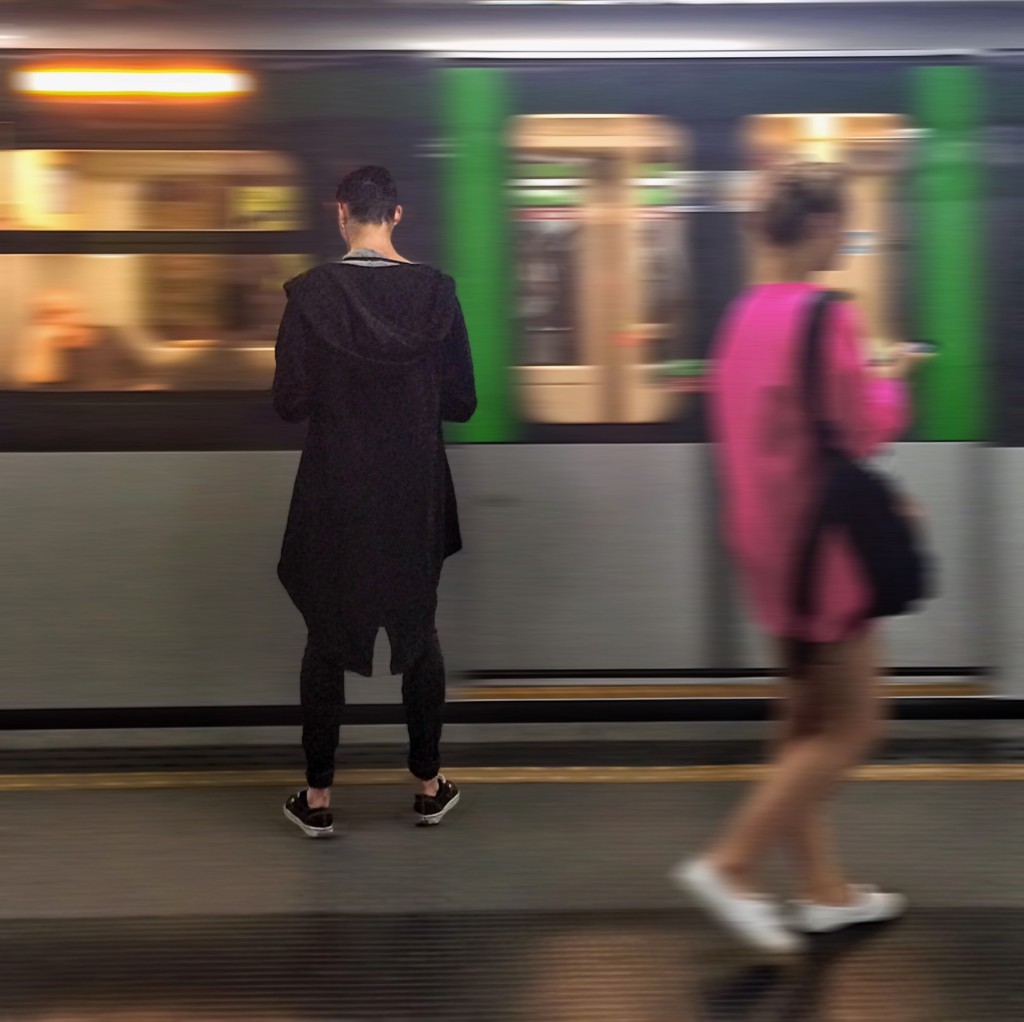


Some of them… so beautiful! I do not deny, I am sensitive to feminine beauty… Every day I cross beautiful women on the subway. I am always at the right distance but I like to think that by taking their portrait, capturing their image and editing with my smartphone, they can become part of my little magic world of mobile photography. Blondes, redheads, brunettes, skinny, tall, buxom, cheerful, sad, sentimental, fascinating, bewitching, provocative, grumpy… whatever their style or attitude, they are all to be portrayed.





They also are huge readers… … my daily one-hour journey to get to work allows me to sit comfortably and read a lot. There are so many people doing the same as me. Reading the email from their smartphones; the online newspapers on their tablet, paper books, or e-books on their readers. Many of them seem completely absorbed; some casual, others seem to be having fun. But perhaps, it highlights the fact that we are all lonely and instead of chatting together we isolate ourselves in our readings.
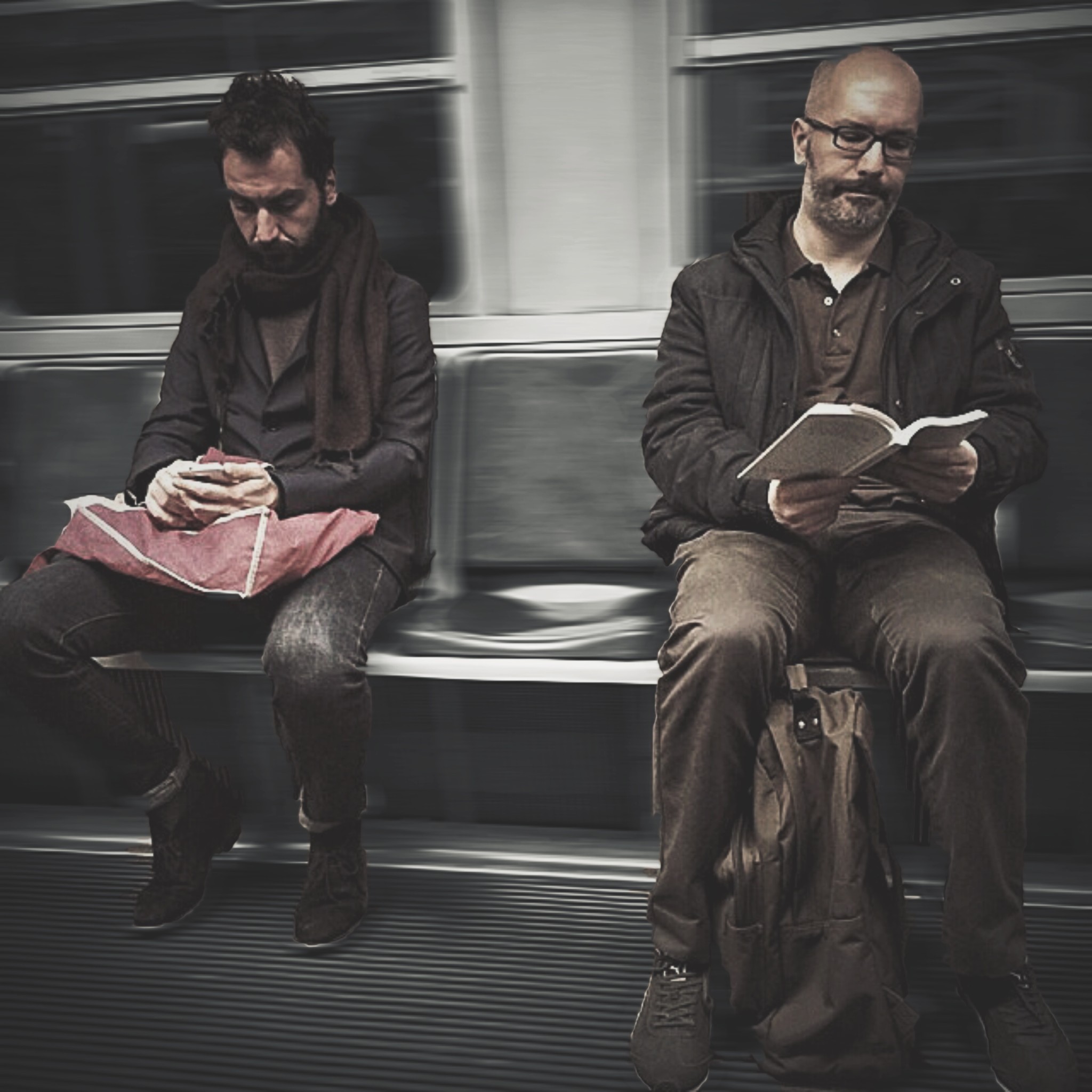


Often people appear thoughtful

Sometimes they look evanescent

They are complicit
 …but not always!
…but not always!

but they are in love too…

it’s a community

time to go out… see you soon on the subway!
You can find Fabio on Instagram as @sikander63

by Grryo Community | Jun 21, 2016 | Stories, You Are Grryo
I consider everything around me like cinema, novels or theatrical plays. Stories and scenes of life, trying to make sense in the world around me. Everyday poetry. My name is Efi Logginou. I am an actress.
I moved from Greece to Berlin over one year ago. I didn’t know the language nor the society. But I felt the need to come closer and to communicate. I always liked to photograph people, especially strangers, when they seem lost in their thoughts.
Germans have a very reserved attitude towards being photographed in public. Because of the colder climate, life unfolds more often inside coffee shops, stores, restaurants and bars; not outside on the streets. The light is more dim.


My photography changed. I started to take photos of people behind glass. Separated by glass, I could come closer to them and observe them at the same time. It is a transparent layer, like a screen, that is emitting a noise: the thoughts of the strangers.
Thoughts are painted on their faces. I don’t need spoken words to understand the expressions. The feelings are written there. Every day, I encounter these stories. Sometimes the moments are very brief, but to me, they can tell a whole life’s story.
A heart-broken young man; a woman contemplating; a lonely old man that might have lost his wife; a passenger daydreaming; a writer reflecting about his words.




The windows offer a setting to the narration of my photos. The reflections connect the silence of the thoughts with the vibrant life of the outside world. I only know from experience how to frame this kind of photo. I am not trained in photography.
Now, when I am travelling back to Greece, I realize that I continue to take photos of people behind the glass. Even though, in Greece, I could easily photograph strangers on the street, I am stuck on this topic. It has become something I enjoy every day; I am curious to see how people in my country appear in similar situations.

The sun is shining daily, the Greeks are definitely louder, and they don’t have as big an issue being photographed by strangers. I realized that street photography changes from country to country; because sunny countries often have street photographers that work with strong contrasts, colors and shadows. In more northern countries like Germany, the colors are more pale, and photographers tend to use black and white because it is easier to create a mood in low light situations.
Street photography is a challenge. Even more, with the changing light. When I frame one of the many scenes of everyday life, of the symphony of the metropolis, the photo can create a lightness of being. Like poetry. Everyday.
You can find me on Instagram as @efi_o or on Flickr




by Grryo Community | Jun 15, 2016 | Stories, You Are Grryo
To live in Varamin, Iran, enveloped by immensely polluted air, is to literally live in the midst of furnaces of fire. The poor and unemployed from different cities come to Varamin to work under horrendous working conditions inside the furnaces to make bricks. There are more than 40 of these brick kilns in the city, and in the past two years those desperate for work have immigrated to Varamin with their families to work in the kilns. Half of the workforce in furnaces are children and adolescents. Sixty four percent of the children are Afghan refugees. Pollution is more severe in these areas, as the dozens of furnaces burn in the city simultaneously. Many of the adult workers complain that their children are suffering from exposure to the pollution created in the furnaces. Despite these problems, the people all work and continue to live there. The majority of these Afghan children have lost their parents to war; killed or maimed from missile strikes. These children work in the brick kilns 11 hours a day, and they have to transport the clay bricks as well. Their walk is a distance of 7 kilometers, and they carry their bricks under the scorching sun in rugged terrain. These children rely on bread, potatoes and peas to sustain themselves to complete the extremely strenuous workload they endure day after day. These are the children of Varamin.
You can find Soheil on Instagram








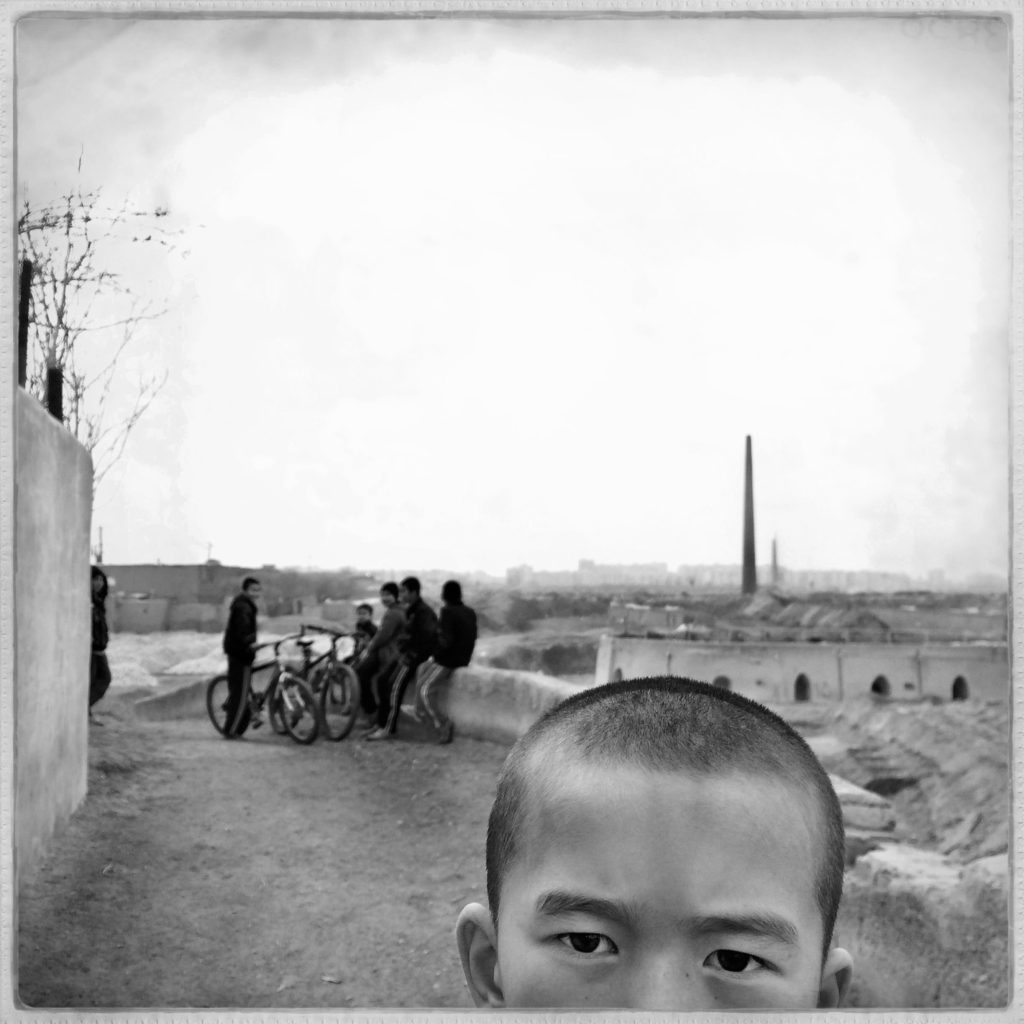



by L. Bird | Jun 8, 2016 | Ladybird, Stories, Storyteller, You Are Grryo
‘April In Paris’ is the first series of the project ‘f r a g m e n t s o f a w o m a n ‘ s l i f e’ . Each series is the story of a real and ordinary moment, lived by a woman and documented by ten diptychs with a short story inspired by them. This storytelling project melds photography and literature, explores their own borders, flirts with reality and imagination without trying to find a reasonable balance between them.
In Paris, on a Saturday, a woman is preparing herself to meet a man. She’s known him for a while, although they have only been polite acquaintances, not even friends. With time, his relationship to her, and not knowing what he really feels for her, comes to her mind more often than she would like. She has tried to fight against this strange phenomenon, this increasing sensation it reveals, but there is nothing she can do but let it take the place it reclaims… This afternoon, she’s experiencing the thrill of this coming moment, fed by her suspended hopes that something will happen. In just a few hours they will meet; this event is appearing to be a date.

The light by the end of this afternoon is sweet and tenuous. In front of the window, facing Paris, her thoughts are about nothing and anything. Music is on, but she can barely hear it.
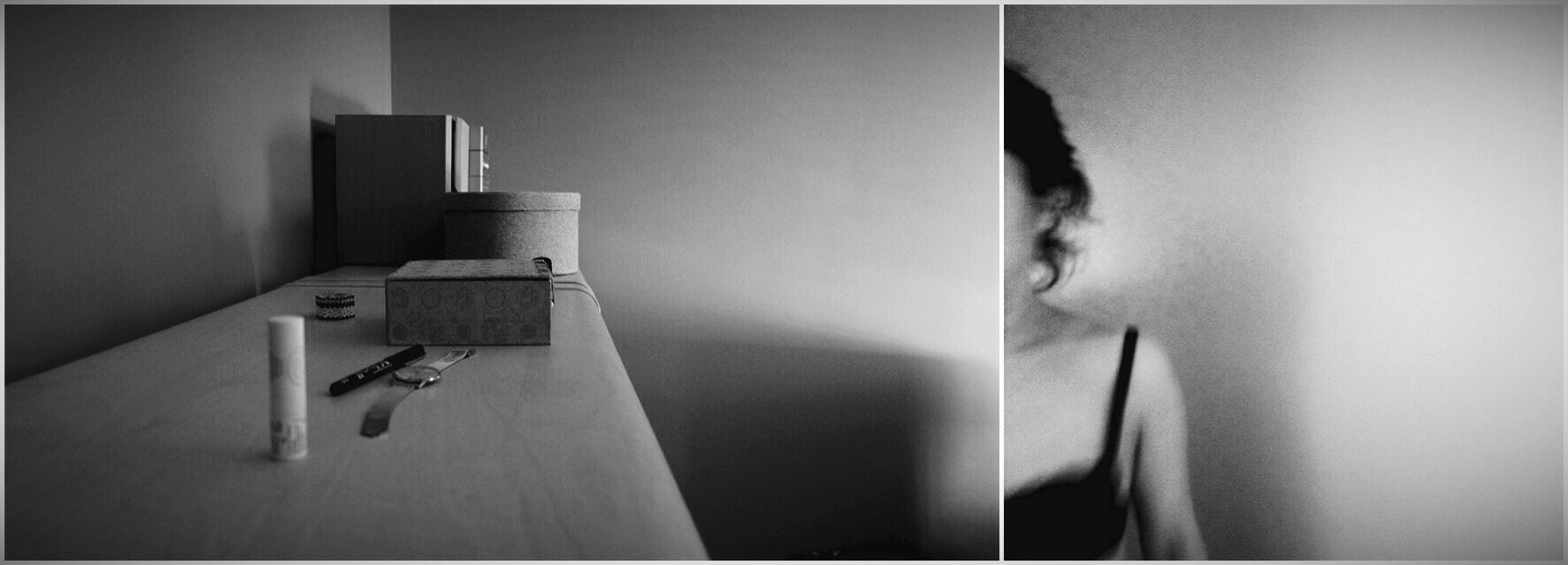
Things she’s left out are like tracks of her day. Shoes and socks abandoned since she came out in the morning, clothes on her undone bed, are tiny signs of her mood.

For an instant, she looked into her own eyes searching for answers to the next hours. She would better…

Sitting down in her bath, she’s cleaning her skin, from her neck to her feet, with delicate movements… The music is coming from the living room and she lets her thoughts follow its rhythm now…
 What time can it be?
What time can it be?
 Back in her bedroom, the waltz of clothing starts. A blouse, a t-shirt, This one would be better?! if ‘better’ can be possible in that matter… If she’s worried, it’s nothing but excitement.
Back in her bedroom, the waltz of clothing starts. A blouse, a t-shirt, This one would be better?! if ‘better’ can be possible in that matter… If she’s worried, it’s nothing but excitement.

While she’s painting her lips, she tries to figure out this very first moment. Would she know his thoughts at first sight? Shoes on, she smiles at the mirror, as if it were him, to visualize how she would look smiling at something he would say. But it only took her a second to laugh at herself.

Time… She’s not late, but the elevator took so long to come to her floor. She doesn’t think about anything, anymore.

Now, she’s just on his way;

L. Bird is an independent photographer and film maker based in Paris [France]. Her work is all about storytelling, whatever it concerns [whether photography, series or short-movies]. Her work’s aesthetic is mainly inspired by street and documentary photography, but in such manner as that it always turns her images into contemporary tales…
Instagram: @ladybird.notes
Vimeo: Lady Bird

by Grryo Community | Jun 4, 2016 | Stories, You Are Grryo
When I first arrived in Peru, in 1979, photography had somehow already shaped my impression of the place. Before leaving London I had been to an exhibition of the work of Martin Chambi, the brilliant photographer from Cusco whose work from the 1920s and 30s seemed not so distant from what I was now observing …

Shadows, 1979.
The above image is about the permanence and timelessness of the indigenous presence in Cusco – that echo of a pre-colonial past which still pervades the old Inca capital.

International Bank of Peru, 1979.
For a time I had a sense of time moving more slowly than I was used to – of a world from long ago that seemed cut off from the speediness of my reality – and I set about documenting it through my photographs. ‘The New Incas’, published in 1983, was the book that resulted (and which I’m currently working on the revised edition of).
But it was the photographers who really seemed most emblematic of this. And so, in the ancient Inca capital, I began to document the world of the photographers of Cusco…

Inside the darkroom, 1979.
Shown above is a street photographer of the old school in Cusco, plying his trade in the Plaza de Armas. Having taken a portrait, here we see him actually developing the negative, which he will then re-photograph to make the final print (using the wooden slats in front of the lens to change the whole apparatus into a copy camera). The small flap on the side allows light into the “darkroom” – it’s an early form of instant photography.

Kodacolor in Cusco, 1983.
Most of the photographers in Cusco made their living doing black and white studio portraits, but they would subsidize this by selling film to the tourists. It produced some unlikely juxtapositions, as seen above.

The Chambi studio in Cusco, 1983.
The towering figure of Peruvian photography is Martin Chambi (1891-1973). Here are three generations of Chambi family, all of them photographers. Standing on the left and looking around the backdrop (in the manner of an assistant in one of Chambi’s portraits) is Teo Allain Chambi – Martin’s grandson. In the middle is Martin’s devoted daughter Julia, and on the right is her older brother, Victor. The massive glass plate camera on the table belonged to the great Martin Chambi himself.
A couple of years later I made “Martin Chambi and the Heirs of the Incas” for the BBC – sadly by that time Victor Chambi had already died, but Julia appears.

Julia Chambi, 1981.
Julia was Chambi’s middle daughter and she worked in his studio from when she was a child. After her father’s death in 1973, she took over the studio and devoted the rest of her life to looking after Chambi’s amazing photographic legacy.

Cesar Meza, Photographer, 1985.
I met him while doing research for the film about Martin Chambi (“Martin Chambi and the Heirs of the Incas”, BBC 1986). Meza had been an assistant of Chambi’s in the 1930s and later had set up his own studio in Cusco. Note the enormous 10×8 glass plate camera that he was still using. (He does a very engaging cameo performance in the film!)

Cecilia, 1981.
The street sign belonged to Cesar Meza (see my portrait of Meza, above), and Cecilia, who had grown up in Cusco, was my wife.
Eventually I managed to pull all these ideas together by persuading the BBC to finance a film about Chambi, who was at that time relatively little known.

Poster for “Martin Chambi and the Heirs of the Incas”, 1986.
The film in fact proved to be the beginning of something new for me – making movies.
Paul Yule is @paul_yule on Instagram. More about him at www.paulyule.com

by Grryo Community | May 29, 2016 | Stories, You Are Grryo
I love windows – the openings in walls that invite the light in. I think that perhaps light is God’s way of asking us to notice.
Looking back at the long stretch of years my photographs span, I find many images of windows…
a long wall of visual time punctuated by windows. Some let in light, some shut it out, some reflect; windows as picture frames, frames within frames.

It’s never been about the view…..or the curtains, or the cat. It’s always been about the light.
I am delighted by light.


It’s said one picture is worth 1000 words. When I was working from contact sheets of my black and white negatives in the time I now refer to as “long ago”, I was thrilled to find one image worth printing, worth 1000 words, out of every 36.
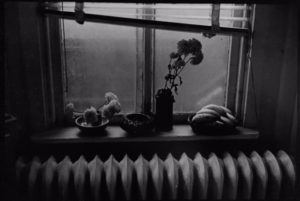
The rest just said blah blah blah blah blah. It was a bit like panning for gold – or silver, in the case of film photography – the finding one or two precious nuggets amid the waste was cause for elation.

I wish that I could throw a basket of words up into sky and have them fall back down rearranged by Emily Dickinson…..Robinson Jeffers…..Dr. Seuss…..

“ I think in pictures. Words are like a second language to me.” – Temple Grandin
My pictures are my poems; my poetic license.

Caren Sturmer is @exphotographer on instagram

by Grryo Community | May 28, 2016 | Stories, You Are Grryo
The first contact with our artistic side I would guess occurs at an early age, through the knowledge of colors and shapes. In my case, I met arts by obsessive stages. In my childhood I used to draw, as a teenager I played music, and now in my adulthood I have taken more interest in photography. In the end each thing has inspired the others.
I believe that within each of us inhabit concerns waiting to be discovered, even in solitude, in every painting you draw, in every song you play, in every photo you take, You Are Not Alone.

I Have Traveled The World
I decided to live in Guadalajara, Mexico. A city that I consider geographically privileged, naturally beautiful, rich in history and art. Its proximity to beaches and other historical destinations help my purpose.
For work and pleasure I’ve been fortunate to know places and people; I inherited my grandfather’s ability to make friends and my greatest treasures are the stories that have inspired each photo.
With all the aforementioned elements as scenarios, I have managed to give life to the stories and characters. I appreciate the opportunity to share them with you.

Guardian Angel
Place: Tlaquepaque, Mexico
{Inspired by a short story written by Enrique Anderson Imbert “Tabù“}
The guardian angel whispered to Fabian over his shoulder.
–Fabian be careful!, it is your destiny to die as soon as you say the word zangolotino.
–Zangolotino? Asked Fabian
He dies.

Alien Turned Human.
Place: Mazatlan, Mexico
The extraterrestrial intelligent life forms have decided to send explorers to the Earth, they have thought of everything, the fragile and innocent body of a child never arouses suspicion. At least it’s what Dario thought while he was playing in his mind near the beach at sunset in Mazatlan, Mexico.

A Cowboy In The City
Place: Downtown Guadalajara, Mexico
I had never seen a cowboy without a horse, but that afternoon walking around downtown I witnessed it.
-Where is your horse, cowboy? I asked him.
After a deep silence he told me.
-It’s sick, and I came to here to get medicine...
-I’m sorry to hear that, what will you do when it recovers? I asked again.
-I will jump on my horse and ride, because a cowboy’s work is never done, He said.

Red Wall
Place: Municipal Market Tlaquepaque, Mexico
Her mother told Emma:
–Life is like a path with a red wall, one day you will be a woman, you will get a job, and you will find a man, then you will fall in love and have kids.
–You know, I don’t really like the colors, She said.

Land Of Freedom
Place: Mazatlan, Mexico
When asked what he wants to be when he grows up, he answered without hesitation.
–Free as a bird.

She Doesn’t Remember Me
Place: Leon, Guanajuato. Mexico
You taught me to think beyond the mind, but memory escaped yours.
–Goodbye Grandma, every evening we go back to being friends.

Time to go.
Place: Guadalajara, Mexico
That sunny Saturday afternoon while I was walking, I heard the boss asked to his employee.
-Did you clean the tools?
-Yes
-Did you check the locks?
-Yes, sure.
-Did you park the truck?
-Yes, of course.
-Can we go to check?
-Sorry Sir but it’s time to go…

Family
Place: Leon, Guanajuato. Mexico
That April morning when the sun came up, we discovered that our family was larger than we thought.

Under The Wings
Place: Mazatlan, Mexico
–How it feels to fly? I asked to the wind.
–Close your eyes and three, two, one…open them, He said.

From Another Point Of View.
Place: Zapopan, Jalisco. Mexico
Whenever friends asked Luis for advice, he always said:
-Let me see from another point of view

I’m Leaving The City.
Place: Downtown Leon, Mexico
–I’m leaving the city, nobody needs me, The old man said, grabbing his bike.
–I need you, The kid said.
–Whistle if you need me, The old man said.
–If I would have to whistle every time I need you, I would be the wind, dad, The kid said.
About vondav:
My name is Daniel, I’m from Mexico City but I’m based at Guadalajara. I earned a degree on Industrial Engineering and I’ve worked as a logistics manager for multinational companies.
You can find me on Instagram as @vondav

by Grryo Community | May 24, 2016 | Stories, You Are Grryo
My name is Michel de Veld
I’m a nurse, working on a team for home care, helping people with dementia and psychiatric disorders.
I live and work in Rotterdam, the Netherlands.






Combos Lens/ Film used on the pictures above are:
Aatto / Blackeys44 Hornbecker / Rijks Eric / ArjanBW
Jane / W40 Eric / Love81 Salvador84 / Otto
My first attempt in taking photographs started in 2011 with my iPhone 3GS and buying the Hipstamatic app. It was love at first sight! 😉 On Twitter I followed @hipstachallenge and I took part in their daily themes; it was fun to see other people’s interpretations. When they moved to Instagram, I followed. On IG I found out that there were a lot of enthusiastic Hipstamatic lovers and many challenges. I’m still participating in some of those challenges.
I find my inspiration in everything I see around me, such as people, animals, nature, city life, and looking at pictures by other photographers. Sometimes I go out and take a walk, or a ride on my bike, just to take pictures. Other times I’m on my way, minding my own business or running errands and I’ll stop to take a shot. I like those spontaneous action shots. I bought a very useful tool, a shoulderpod S1 to have a better grip on my iPhone. I try to learn and get inspired by other (Hipstamatic) photographers and exhibitions in museums of photography and art. But mostly, I learn by just taking a whole bunch of pictures with Hipstamatic on my iPhone 6s.
When I take pictures with Hipstamatic, what I always do is, I set a combo with a particular lens, film and/or flash and take some pictures with it. Sometimes it’s the combo for a challenge on Facebook for Hipstamatic Sardinia, Hipstamatic People or Hipstamatic Holland. And on IG for Hipstaconnect, Hipstahub or Salvadorsunday and many more…
Then Hipstamatic has the possibility to shake to randomize, STR. I have it almost always activated because you can shake your iPhone and let the app decide which combo you choose. This can end up in unexpected results, sometimes horrible, but other times, wonderful photos.
I find the framing of the subject important, and I focus on their shadows and reflections. But you have to get close to your subject when you take a picture with an iPhone; especially with street photography. It is challenging.
The Hipstamatic app, ever since Version 300, has evolved into an editing app, which you can still use as I described above, but if you want to, you can edit your photos afterwards.
This is an example of a photo I edited after I took it with the combo Muir lens and Blanko일 film

I used these settings for other photos too, and found out that it worked for me; see the next pictures.

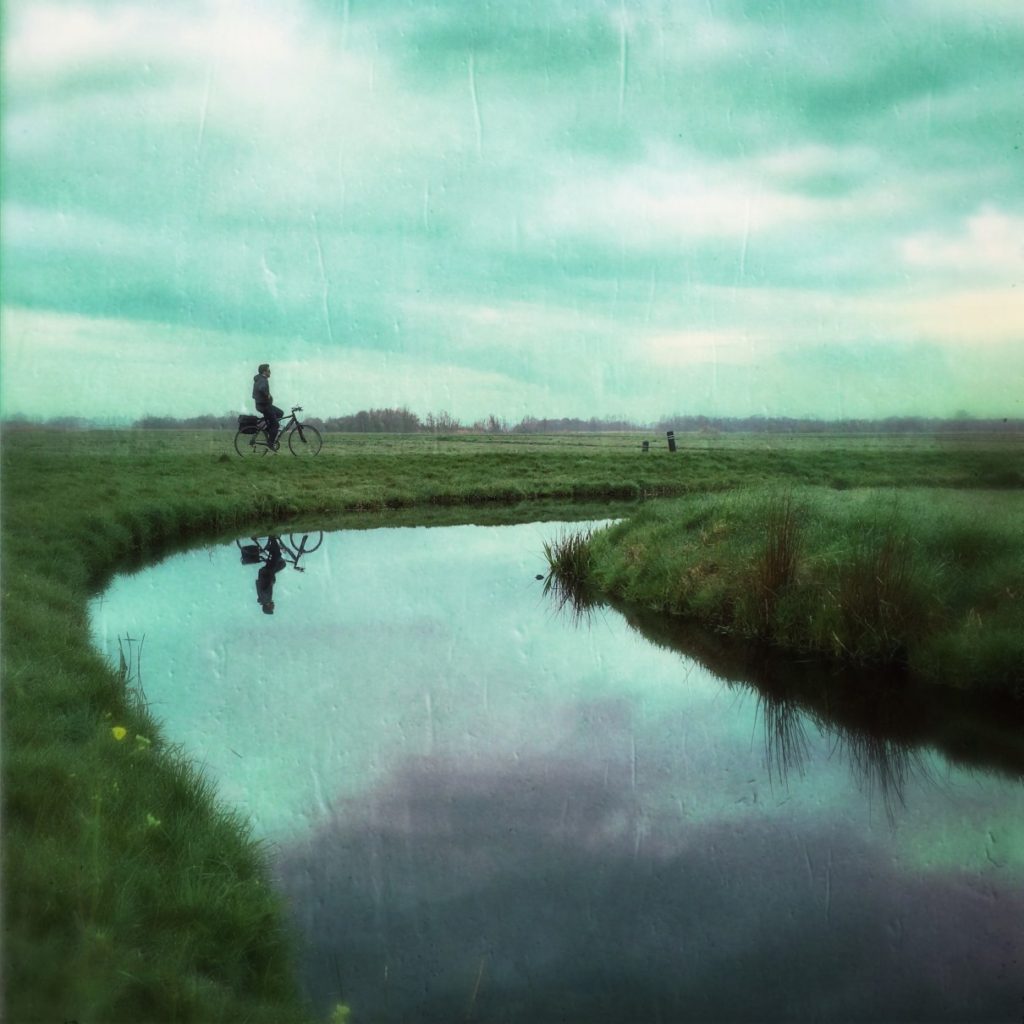
I also like black and white photography; it takes you more to the essence of shapes and/or accentuates characters of people.
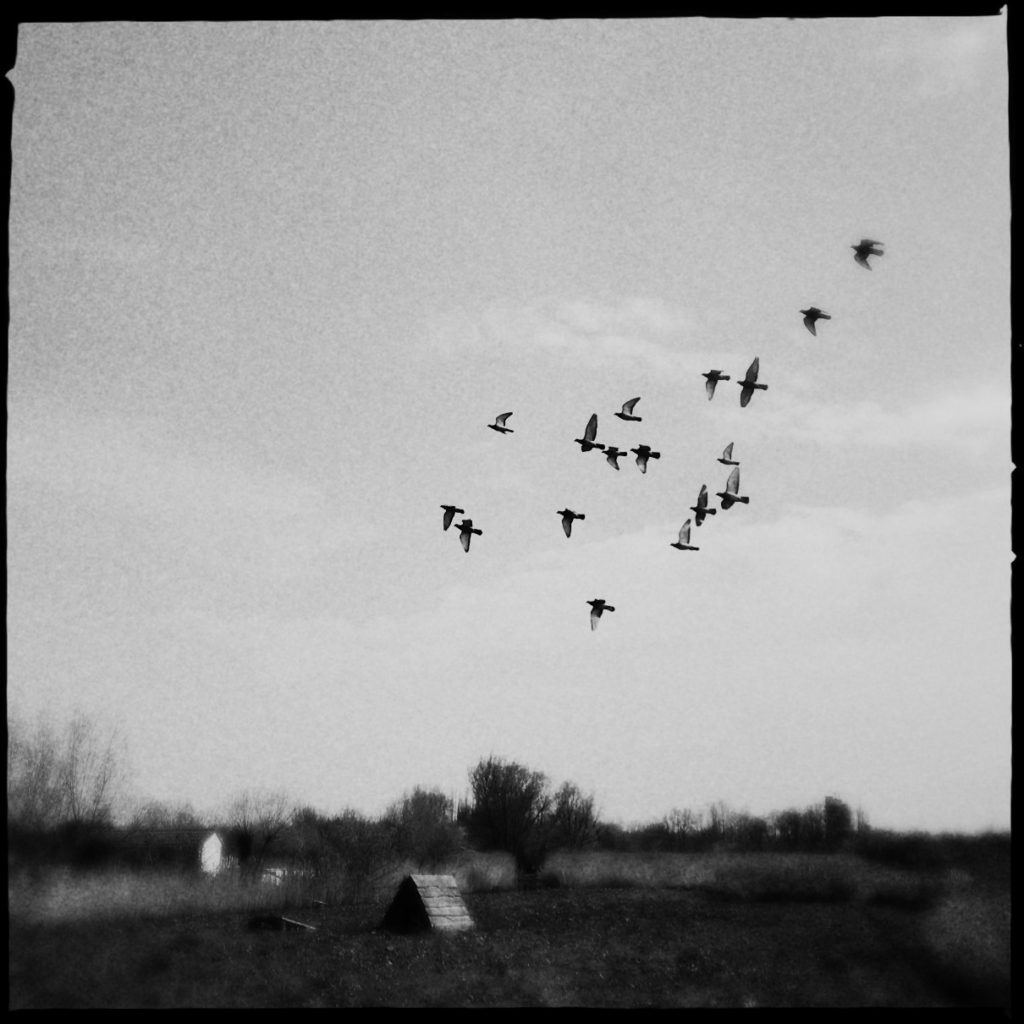
Combo: Anne-Marie / US1776

This is shot with a combo registered on the Hipstography website as combo
#395; Tinto1884 lens and QueenWest film
The hipstography.com site is an informative and inspiring website. (If you want to learn more about Hipstamatic, this is the place to start!) Hipstamatic has evolved through the years into an editing app, with great possibilities, with which I’m playing now and then. But what I love the most is just to capture the moment and make it into a piece of art.

Combo Lucas Lens and Gongbi film, I changed the depth of field and the vibrancy

Combo: Emma / Big Easy
You can see more of Michel’s work on : Instagram | Facebook | Flickr


















 “Martina”
“Martina”

























































































 What time can it be?
What time can it be? Back in her bedroom, the waltz of clothing starts. A blouse, a t-shirt, This one would be better?! if ‘better’ can be possible in that matter… If she’s worried, it’s nothing but excitement.
Back in her bedroom, the waltz of clothing starts. A blouse, a t-shirt, This one would be better?! if ‘better’ can be possible in that matter… If she’s worried, it’s nothing but excitement.














































